Solar Viewing
WARNING: NEVER LOOK AT THE SUN WITH YOUR TELESCOPE WITHOUT APPROPRIATE FILTERS IN PLACE. PERMANENT AND IRREVERSIBLE DAMAGE TO YOUR EYES AND YOUR EQUIPMENT WILL OCCUR.
Often times in Astronomy, we spend so much time looking at the distant stars, we forget about our closest star. Observing our Sun is fascinating. It changes constantly, allowing for new views every time you pull out the telescope. As long as it is done safely, solar observation is a great way to extend your astronomy hobby into the daylight hours, too!
With solar observation, there are different methods you will use, depending on the type of telescope you want to use and the features you want to see on the sun.
White Light:
This type of solar observation is designed to allow you to view the Solar photosphere and sunspots. This is, by far, the cheapest option and allows you to turn your existing telescope into a solar telescope. Typically, a white light solar filter is placed over the front of the telescope, reducing the light that hits the eyepiece. Another option, if you have a refractor, is to use a Herschel wedge (also known as a Herschel Prism), which will reject the light at the eyepiece, but maintain the full spectrum of light to the eyepiece (where a white light filter will cause some blocking of certain parts of the spectrum). Herschel wedges cannot be used with reflecting telescopes.
Hydrogen-Alpha:
Hydrogen-Alpha (Ha) solar observation is typically done with a dedicated Ha Telescope or a Quark. This type of observation, however, allows for views of the granulation on the Solar chromosphere, along with views of flares and prominences on the Solar limb. The telescope restricts the bandpass of light to the Hydrogen-Alpha emission line only (656 nm wavelength), which is the spectrum in which the Sun shows much of its activity.
Calcium-K:
Calcium-Potassium (CaK) solar observation is also done with a dedicated module (diagonal) and a refractor much like a hershel wedge. Many times, this is used primarily in astrophotography, as the CaK emission line sits at approximately the 393 nm wavelength, which is on the edge of the visual spectrum. Some people are able to see detail at this line, but many cannot. Cameras, however, “see” it very well, resulting in excellent images that are very different than the Ha counterparts.
What We Recommend for Solar Observing:
Baader ASTF/ASSF series filters (Front aperture, white light filter, sized or loose sheet)
Thousand Oaks 2+ series (Front aperture, white light filter, sized)
White Light Herschel Wedges (Refractors only, white light)
Daystar Quark (SCTs or Refractors, Hydrogen Alpha and other specialty bandpasses)
Lunt and Coronado Solar Telescopes (Dedicated Hydrogen Alpha scope, can add double stack)
Solar observation is a very unique and fulfilling aspect of astronomy. The Sun is an incredibly complex object, but it is very simple to observe with either a filter for your existing setup, or a new scope to specifically reveal the wonders of the Sun. Let Cloud Break Optics help you choose a solar observing solution that’s right for you!
OUR RECOMMENDATIONS FOR Solar Viewing
Sorry, there are no products in this collection

